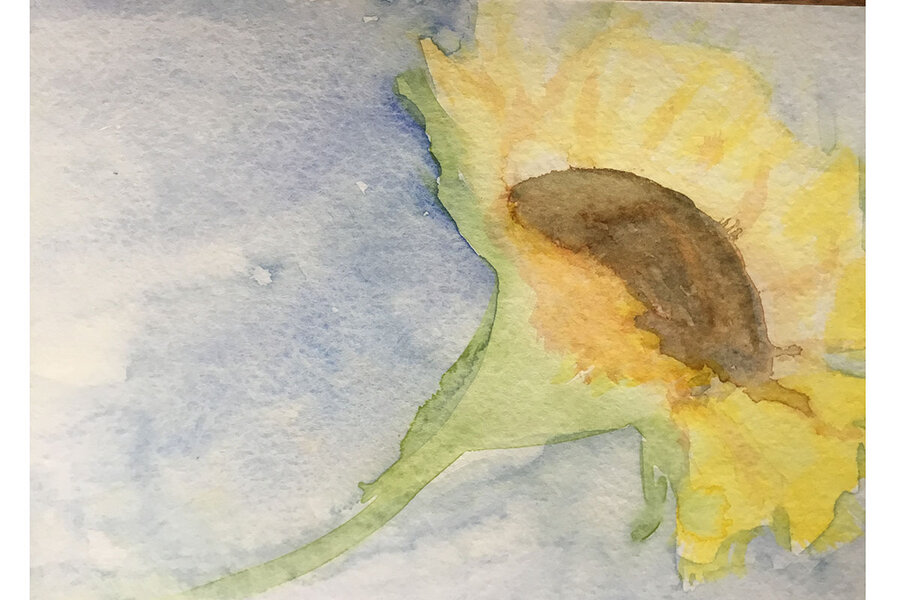An American’s daily art prayers for Ukraine
Loading...
The first anniversary of the war in Ukraine has passed, but the commitment of Ukrainians to freedom has not. It continues, and in a very small way, so it does with a retired schoolteacher-turned-painter in St. Louis.
For more than a year, Marjorie Theodore has been posting daily art prayers for Ukraine on her Facebook page. They are mostly watercolors of sunflowers, and they reflect the ups and downs in the war.
Sometimes, petals fall like tears. In others, the face of a flower turns hopefully toward the sun. A group of sunflowers may bend low under a mighty wind. Or a white stork, which is Ukraine’s national bird, may spread its black-tipped wings and soar over the blooms.
Ms. Theodore is a friend of a friend on Facebook, and I’ve seen her images through repostings. I don’t know her personally, but over the months, I’ve marveled at the many ways she depicts these symbols of Ukraine. Every day brings a new painting, drawing, or acrylic swirl.
Each posting is accompanied by a prayer of just a few words. They can plead for peace or cry in despair, and they embrace other troubled regions in the world. There’s also a lot of gratitude in her prayers, especially for the persistence of Ukrainians and all those who are helping them.
As the war’s anniversary approached, I called Ms. Theodore to learn more about her project and to see whether she planned to continue. How could she not? she answered. “I hope that my commitment will last as their commitment does,” she told me.
It’s so easy for people to forget wars and crises in faraway places. By posting every day, even if only 25 or 35 people give a thumbs-up or make a comment, she knows that Ukraine is in their thoughts, however briefly, and that’s just what she is hoping for.
“I do think art is prayer,” she said. “I think that song is prayer. When you are thinking of someone that you love, that is prayer. So when I think of Ukraine and I express my feelings through these daily pictures, it is a prayer.”
The daily exercise has also had an impact on the painter. One outcome has been to improve her knowledge of geography and world events. On a deeper level, for the first time that she can remember, she’s praying every day.
“I think sometimes that people who don’t know me think I’m in this constant dark state of being under a cloud because I’m posting about brutality,” she says. “But I’m not. I’m in a good spot. I draw strength from this. I see the beauty of the world because of it.”
By that, she means that Ukraine has taught her to appreciate more deeply “the things that make life lovely.” Simple things. The beauty of her backyard. Light coming through her windows. The birds she hears when she walks her dog. “There’s so much beauty in the world.”








